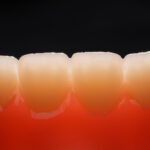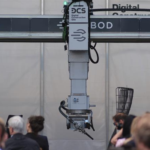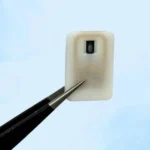Researchers from Hyderabad in India have successfully transplanted a 3D printed cornea onto a rabbit, which will pave the way for transplants onto human patients.
Read on to learn more about this world first.
The researchers from Indian Institute of Technology (IIT) ,LV Prasad Eye Institute (LVPEI), and the Center for Cellular and Molecular Biology (CCMB), all located in Hyderabad, produced the cornea using natural, animal-free components.
It was printed with a biomimetic ink made from human donor tissue. The researchers decellularized a human cornea tissue matrix and added some stem cells. The old cornea has lived on as the basis of a new cornea and may contribute towards treating scratched/damaged corneas, which can lead to blindness.

“It is the first 3D printed human cornea that is optically and physically suitable for transplantation,” read a statement from researchers at LVPEI.
“The bio-ink used to make this 3D printed cornea can be sight-saving for army personnel at the site of injury to seal corneal perforation and prevent infection during war-related injuries or in a remote area with no tertiary eye care facility.”
The result is a biocompatible cornea that can treat a multitude of conditions, with no risk of rejection from the body, as could be the case with animal transplants.
The traditional methods of treating corneal issues has been with animal based transplants or artificial ones, neither offering the optimal solution. Pig-based transplants are common, and are not universally acceptable for cultural or religious reasons. A human-derived alternative deals with that problem by removing animals from the equation altogether.
The new printed corneas could benefit sufferers of corneal scarring or keratoconus, which can both lead to blindness if not treated.
Additionally, the researchers see it as having application in the military, where eye injuries such as perforated corneas can become infected on the field. It seems that the 3D printing technology capable of printing a cornea, can also print a band-aid for your cornea, at least until you get to a proper eye specialist to get it fixed.

“It is a made-in-India product by an Indian clinician-scientist team and the first 3-D printed human cornea that is optically and physically suitable for transplantation,” said a statement from lead researchers Dr Sayan Basu and Dr Vivek Singh.
“The bio-ink used to make this 3D printed cornea can be sight-saving for army personnel at the site of injury to seal the corneal perforation and prevent infection during war-related injuries or in a remote area with no tertiary eye care facility.”
The next step is to soon begin human trials, and this stage will be funded by philanthropic organizations such as the Sree Padmavathi Venkateswara Foundation.










